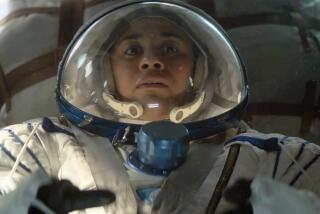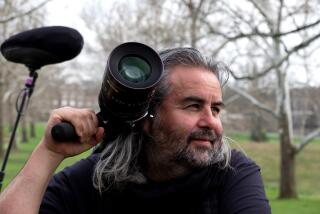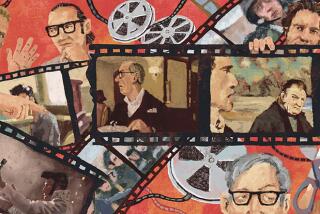‘Battleship Potemkin,’ the director’s cut
No one ever forgets the first time they see the breathtaking “Battleship Potemkin,” the most bravura 69 minutes in film history — actor Douglas Fairbanks called it “the most powerful and the most profound emotional experience in my life.” But, paradoxically, since its 1925 release, Russian director Sergei Eisenstein’s masterpiece has been impossible to see on a big screen in the form the director intended. Until now.
Playing at the Nuart in West Los Angeles for one week only is a new 35mm print of a “Potemkin” restoration that is the result of a 20-year collaboration between film archives in three countries. It is a knockout.
To see “Potemkin” in its restored glory, complete with Edmund Meisel’s pulse-pounding score recorded by a 55-piece orchestra, is to be astonished anew at what a dazzling piece of virtuoso filmmaking this is. Packed with movement, incident and beauty, this is no fusty museum piece but a thrilling jolt of pure cinematic adrenaline.
Based on the real story of a sailors’ revolt on an armored cruiser docked in Odessa harbor during Russia’s abortive 1905 Revolution, “Potemkin’s” political content was considered so incendiary in its day that it suffered numerous cuts and emendations that made restoration difficult.
What this definitive “Potemkin” does, aside from restore all 146 original title cards as well as the film’s 1,374 shots, is to take discussion of the film beyond its most celebrated sequence and restore a much needed fuller sense of what makes it such a sensation, both then and now.
That sequence, as all film students know, is the outstanding Odessa steps montage in which robotic Cossacks descend wide stone stairs and massacre a wave of innocent humanity. It is a triumph of the montage-style fast editing that made both Eisenstein and Soviet filmmaking famous around the world.
The sequence has been copied and parodied numerous times, most memorably in “The Untouchables,” “Brazil” and the films of Woody Allen. But not only is it not all that “Potemkin” has to offer, it also has overshadowed the film’s other virtues.
As this new print beautifully demonstrates, Eisenstein’s celebrated cinematographer Eduard Tisse was both a master of pictorial imagery and a virtuoso in the use of shadow and light. As opening shots of husky Russian sailors sleeping in hammocks below decks demonstrate, there is not a stale or ordinary composition anywhere in the film.
Soon, two of those sailors rouse themselves and go off to whisper conspiratorially in a way that emphasizes the inescapably didactic nature of “Potemkin’s” story. “We must support our brothers and stand in the forefront of the revolution,” says the heroic Vakulinchuk (Aleksandr Antonov). “All Russia has risen. Must we be the last?”
Dialogue and subtle characterization may not be the heart of “Potemkin’s” appeal, but there is no denying Eisenstein’s way with the sweep of history. His staging of both the shipboard revolt that leads to Vakulinchuk’s death and the mass demonstrations in the city of Odessa afterward are textbook illustrations of how to orchestrate movement within a frame.
The power of these at-times overlooked virtues means that that legendary Odessa steps sequence doesn’t come out of nowhere, and familiar elements such as the out-of-control baby carriage feel like pieces of a whole, rather than isolated virtuoso elements.
When all these pieces are put together, with the addition of the hand-tinted red flag that’s run up Potemkin’s flagpole, the result is so vivid and dynamic, it’s a shock to remember that this is a silent film that’s more than 85 years old. Watching this new print enables us to more than feel the undeniable excitement Eisenstein felt at reinventing cinema, it lets us share it with him.
More to Read
The biggest entertainment stories
Get our big stories about Hollywood, film, television, music, arts, culture and more right in your inbox as soon as they publish.
You may occasionally receive promotional content from the Los Angeles Times.











